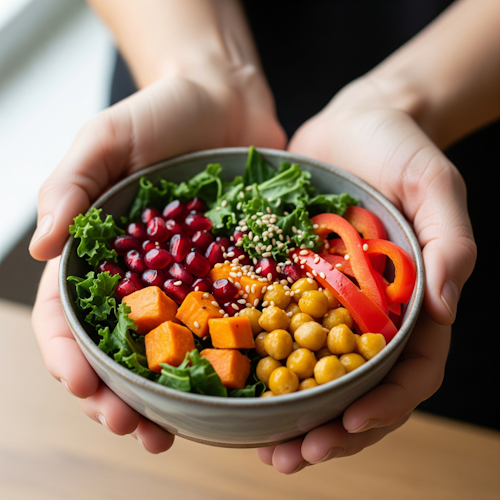If your body could keep a diary, what would it write? For many of us, the pages would be filled with stories of punishment and betrayal. Stories of starvation diets, of being pushed to exhaustion, of being pinched, prodded, and cursed at in the mirror. It might read like a long, painful apology letter we never wrote.
Dear Body, I’m sorry for all the times I called you “not good enough.” I’m sorry for the cabbage soup, the juice cleanses, the skipped meals. I’m sorry for believing that my worth was measured by the number on the scale. I’m sorry for treating food as the enemy and you as the battlefield.
This internal war, waged for years or even decades, is the toxic legacy of diet culture. It’s a culture that hands us a rulebook, labeling foods as either “good” or “bad,” “clean” or “sinful”. A slice of cake becomes a moral failure; a salad becomes a mark of virtue. This binary thinking is the root of a painful and destructive cycle. We restrict the “bad” foods, our cravings intensify, and when we inevitably “give in,” we are flooded with guilt and shame. This shame leads to more restriction, and the yo-yo dieting cycle continues, damaging not only our metabolism but our mental and emotional well-being.
What is Mindful Eating?
Mindful eating is not a diet. There are no menus, no calorie counting, and no forbidden foods. It is the simple, revolutionary act of being fully present with your food. It’s about shifting your attention from external rules to your body’s internal wisdom, learning to hear, trust, and honor its natural signals of hunger and fullness. By doing so, you can transform your relationship with food from one of conflict to one of nourishment, pleasure, and peace.
Three Simple Exercises to Begin Healing Today
Healing is a journey, not a destination. It starts with small, intentional steps. Here are three simple exercises you can practice to begin rebuilding trust with your body.
1. The First Bite Experience
This exercise, often taught with a single raisin, can be done with the first bite of any meal to reconnect you with your senses.
- Observe: Before you eat, take a moment to look at your food. Notice the colors, the shapes, the textures. Appreciate where it came from and the journey it took to get to your plate.
- Smell: Bring the food to your nose and inhale its aroma. Notice how your body responds. Does your mouth water? Does your stomach rumble?
- Savor: Take one small bite and hold it in your mouth without chewing. Notice the initial taste and texture on your tongue.
- Chew Slowly: Begin to chew, paying full attention to the changing flavors and sensations. Try to chew until the food is fully broken down. Many people find it helpful to set their fork down between bites to slow the pace.
- Swallow: Notice the intention to swallow, and then follow the sensation of the food as it travels down to your stomach.
By practicing this with just the first bite of one meal a day, you begin to break the habit of mindless, automatic eating and rediscover the simple pleasure of your food.
2. Tune Into Your Hunger Scale
For years, you’ve been told when and what to eat by external diet plans. The hunger scale is a tool to help you listen to your own body instead. Before you eat, pause and ask yourself, “On a scale of 1 to 10, how hungry am I?”.
- 1: Ravenously hungry, feeling weak or dizzy.
- 5: Neutral, neither hungry nor full.
- 10: Uncomfortably stuffed, feeling sick.
The goal is to start eating around a 3 or 4 (feeling the first signs of hunger) and to stop around a 6 or 7 (feeling satisfied and comfortably full). This practice helps you differentiate between physical hunger and emotional triggers like stress or boredom, giving you the power to choose how to respond.
3. Practice Self-Compassion
Perhaps the most crucial ingredient in healing your relationship with food is self-compassion. For so long, the inner voice has been a harsh critic. Self-compassion teaches you to speak to yourself as you would a dear friend. It has three core components:
- Self-Kindness: This means replacing harsh self-judgment with warmth and understanding. Instead of, “I’m such a failure for eating that cookie,” try, “I had a tough day, and it’s okay to struggle sometimes.”.
- Common Humanity: This is the recognition that you are not alone. Everyone struggles, everyone feels imperfect, and everyone has challenging experiences with food and their body. This shared human experience connects you to others rather than isolating you in shame.
- Mindfulness: This involves observing your difficult thoughts and emotions without judgment. You acknowledge the feeling of guilt or the negative thought about your body, but you don’t over-identify with it or let it spiral. You simply notice it, and let it pass.
Healing your relationship with food is a profound act of self-care. It’s a journey of unlearning and rediscovering, of letting go of shame and embracing kindness. Be patient with yourself. Celebrate small progress. Today, you can write a new entry in your body’s diary. It can be a letter of apology, but more importantly, a promise to start listening. A promise to be a friend.


